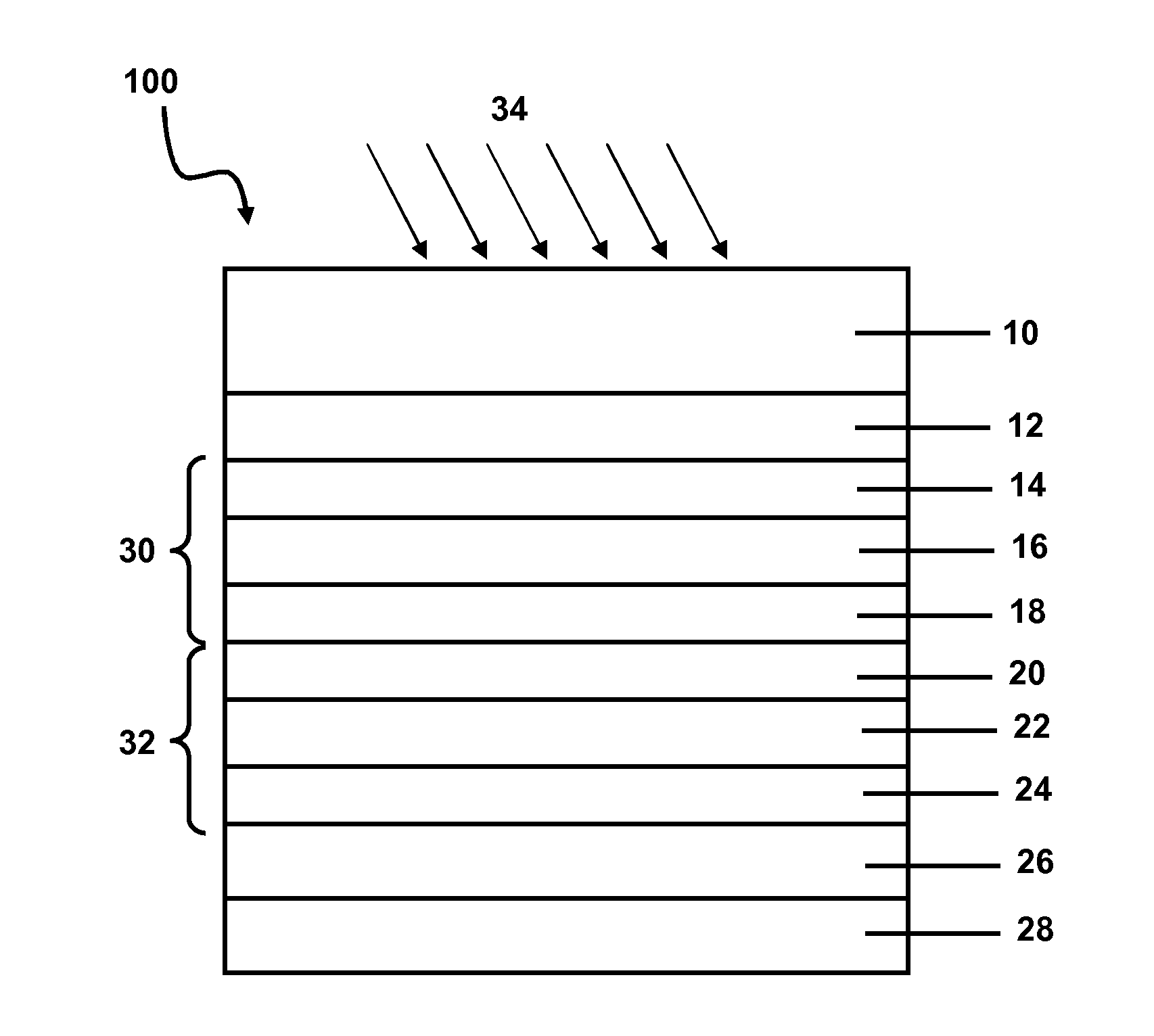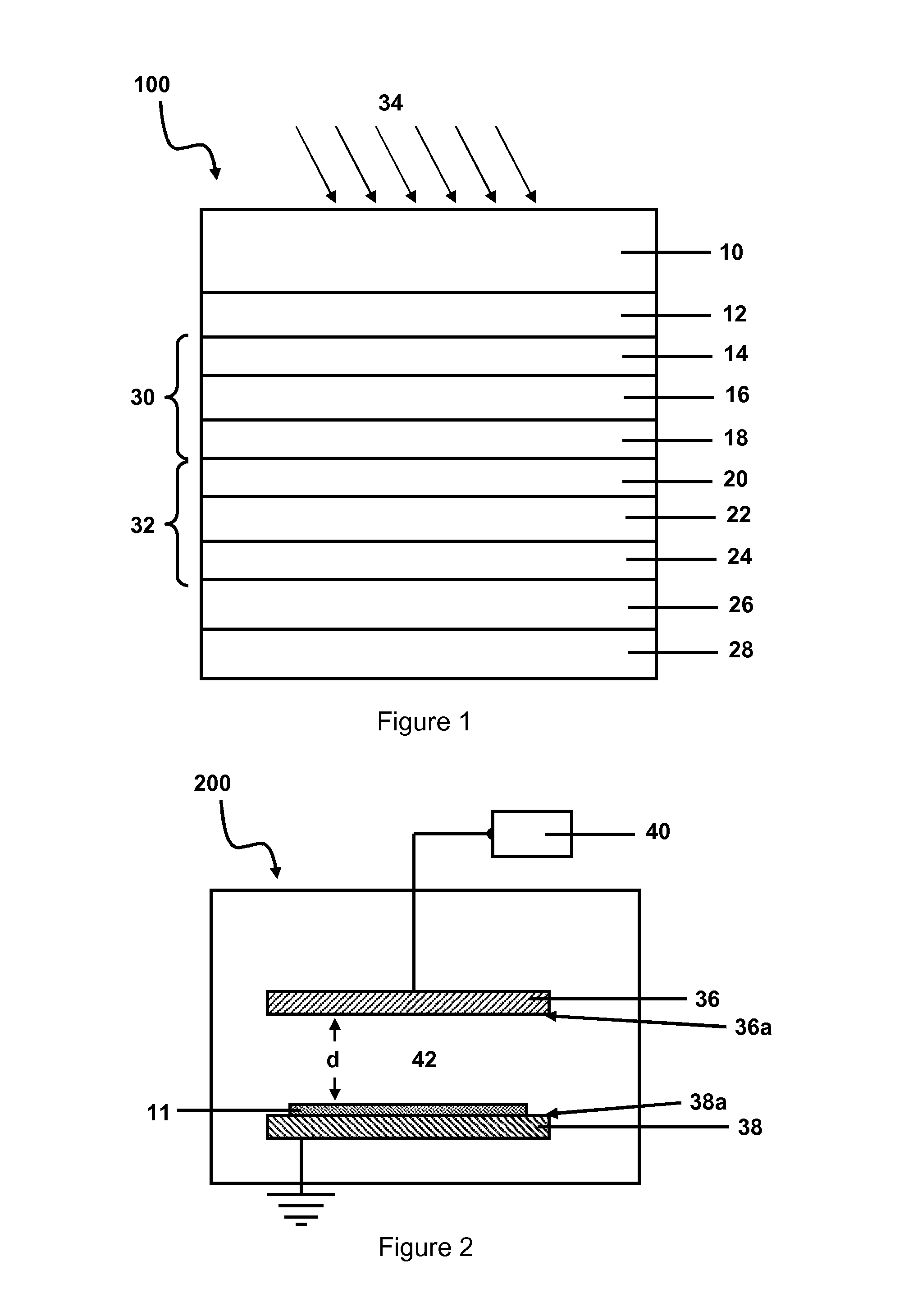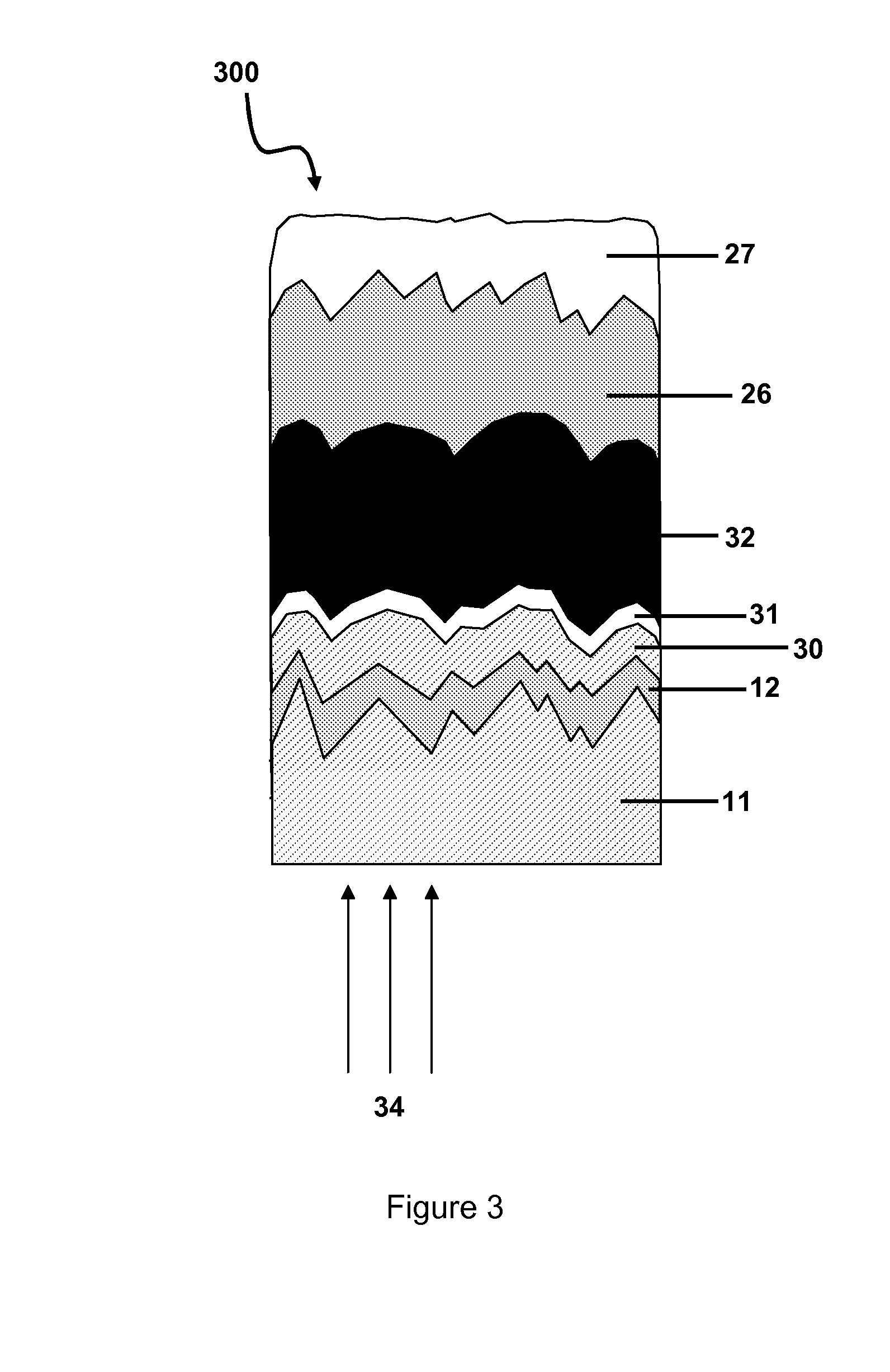Thin film silicon solar cell in tandem junction configuration on textured glass
a technology of tandem junction and solar cell, applied in the field of thin film silicon solar cell, can solve the problems of light scattering properties of surface textured substrate, limit the ultimate cell efficiency,
- Summary
- Abstract
- Description
- Claims
- Application Information
AI Technical Summary
Benefits of technology
Problems solved by technology
Method used
Image
Examples
examples
[0079]A thin-film silicon tandem junction, according to one embodiment, was manufactured by deposition by PECVD equipment known as an Oerlikon Solar KAI PECVD reactor. To improve deposition rates for solar-grade amorphous and microcrystalline silicon these reactors run with radio frequency (RF) power at a excitation frequency of 40.68 MHz. The results described below have been obtained in KAI-M (520×410 mm2) reactors. One focus had been laid on the further development of the front and back ZnO contact (=electrodes 12, 26 shown in FIG. 1) for optimized Micromorph cell efficiencies. These rough as-grown ZnO layers are deposited by low pressure chemical vapor deposition (LPCVD) from diethylzinc as precursor material. Such a LPCVD process and deposition system are described in U.S. Pat. No. 7,390,731 (incorporated herein by reference). The TCO roughness enhances the light-trapping within the active layers of the tandem cell. In one embodiment, the TCO comprises B-doped ZnO.
[0080]The PEC...
PUM
 Login to View More
Login to View More Abstract
Description
Claims
Application Information
 Login to View More
Login to View More - R&D
- Intellectual Property
- Life Sciences
- Materials
- Tech Scout
- Unparalleled Data Quality
- Higher Quality Content
- 60% Fewer Hallucinations
Browse by: Latest US Patents, China's latest patents, Technical Efficacy Thesaurus, Application Domain, Technology Topic, Popular Technical Reports.
© 2025 PatSnap. All rights reserved.Legal|Privacy policy|Modern Slavery Act Transparency Statement|Sitemap|About US| Contact US: help@patsnap.com



